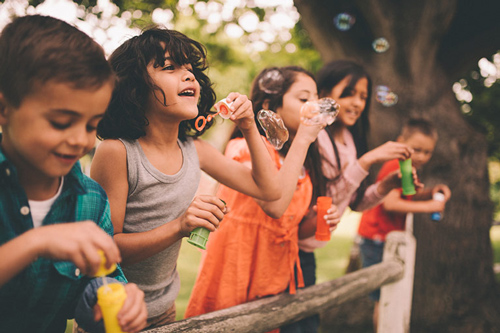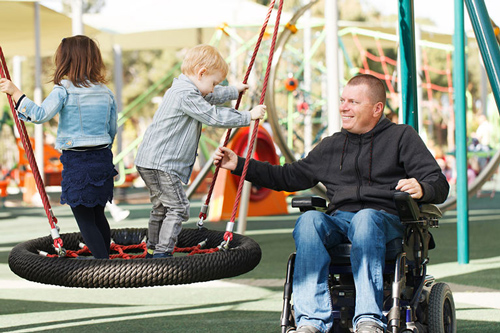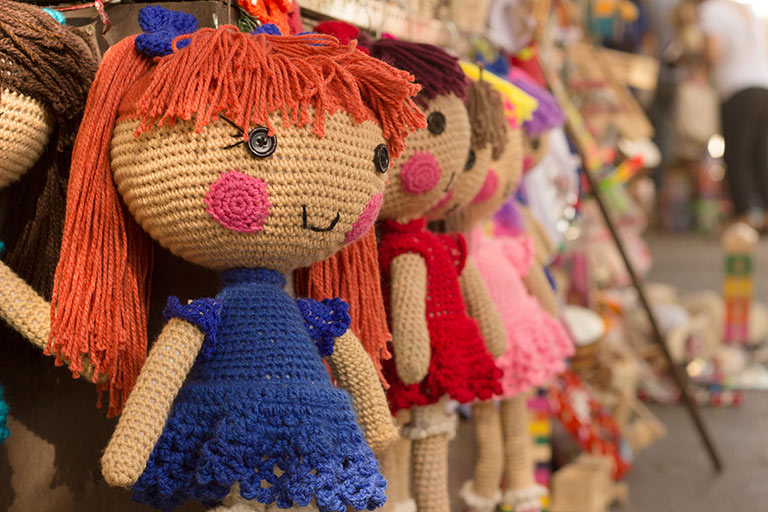There are many values and concepts in Judaism that emphasize the importance of respecting and learning from others. Adam yehidi nivra, for example, means, “every person is a unique creation." This means appreciating the wonderful things that make each person an individual and celebrating differences.

Another concept, lomed mikol adam, shows us how much each person has to offer. Because everyone has something they can teach us, we know that we can learn from each person's unique gifts.

Finally, we give kavod or respect, because it is the right thing to do. By teaching children to celebrate differences, we help them view the world through multiple perspectives.
Read
The books in the lists below feature diverse characters, multi-ethnic families, as well as characters learning to get along and respect each other despite differences. For more great book lists, visit the MORE section.
Reading Tips:
PJ Library Books:
Recommended for ages 6 to 7 Years
Everyone in Goldie Simcha’s apartment building knows it’s Friday night when they smell her delicious Shabbat cholent. But one Friday night, Goldie doesn’t feel well enough to cook. Her neighbors step up to make an unusual cholent for Shabbat -- andsoon Goldie will feel much better.
Recommended for ages 6 to 7 Years
Lucky Sophie has two grandmas, Bubbe and Nai Nai, and they both love to cook. Each grandma has her own family recipe for chicken soup -- and each soup is yummy! As Sophie learns more about these soups, she soon realizes they're actually very similar, even though they've each got their own delicious flavor.
Recommended for ages 5 to 8 Years
A long-lasting friendship develops between Larnel, a young African-American, and Mrs. Katz, a lonely Jewish widow, when Larnel presents Mrs. Katz with a scrawny kitten.
Recommended for ages 4 to 5 Years
As the only Jewish child in her class, a young girl not only learns that each person is unique but is able to share this understanding with her classmates.
Recommended for ages 6 to 7 Years
Ruthie loves to knit -- and to help people. When her family gives shelter to a deaf woman and her baby, Ruthie realizes there’s a way for her to do both at once!
Recommended for ages 10+ Years
Jason's the best pitcher on his Little League team, but he's got a secret that might ruin his entire season. Can he keep his stepfather from finding out?
Recommended for ages 11+ Years
Baseball is a great escape, but can it solve your problems? Nine-year-old Joey Sexton has to grow up fast – his African American dad is gone, his Jewish mother just died, and now he has been sent to live with his mother’s family in Brooklyn. Joey’s zayde (grandfather) acts as though Joey can’t do anything right. Sure, Joey can play a mean game of baseball, but is that enough to impress the person whose affection he wants most?
Recommended for ages 11+ Years
Sahay and Rahel are all alone, traveling through strange and dangerous territory in Ethiopia, trying to reach Jerusalem. They are both brave, but is bravery enough to survive?
Recommended for ages 9+ Years
"I am half Indian, half Jewish, and now I’m half a cheerleader!" When Sonia’s father loses his job, she must leave her beloved private community school and attend the local public school. Will she ever feel like she belongs?
Recommended for ages 9+ Years
Nine-year-old Gertie's life changes dramatically when Hurricane Katrina comes to town. It seems like she's lost everything. Will she ever feel at home again?
Watch
For Kids:
On Shalom Sesame, Sivan makes a new friend who introduces her to a wheelchair accessible park:
Some parents may recognize this classic Sesame Street song:
For Parents:
Do
Play with toys that represent diverse groups of people

One easy way to help your children accept and understand differences is to play with toys that represent various types of people. Here are two great sites to check out:
Try new foods

Respecting and understanding diversity is also part of learning about kavod. Cooking and tasting foods from different cultures is a great way to organically introduce children to diversity. Pick a type of food that your family likes to eat together: soup, bread, or dips, for example, and look at the ways different cultures and countries make and eat that food.
How to Say "Hello" in 21 Different Languages via Time
Embrace what makes you different or special
Like Elmo and "Miss Lupita" in the clip above, teach your child to celebrate what makes them unique and special.
Be honest and direct
While reinforcing the message that we're all the same on the inside is beautiful, it's also important to encourage children to recognize and accept differences. The site, Kiddie Matters points out: "so many adults tell children things like “we don’t see color” and “we are all the same on the inside.” The truth is, people do come in different colors. It is more important that children learn to accept others for who they are instead of pretending that differences don’t exist."
Kids can be blunt which is both startling and fantastic at the same time. While it may be tempting to shush a child if they point out that someone is different from them, go ahead and make it a teaching moment. If a child accidentally says something offensive, gently correct them and explain that what they said can hurt someone's feelings.
More

Looking for more articles, tips, and book lists? Check out:
Parenting articles and resources:
Book lists:
Do you have any tips for teaching your children about respecting differences? Share your stories with us on Facebook, Twitter, or Instagram. Don't forget to add #pjlibrary to your post.
January 11, 2017